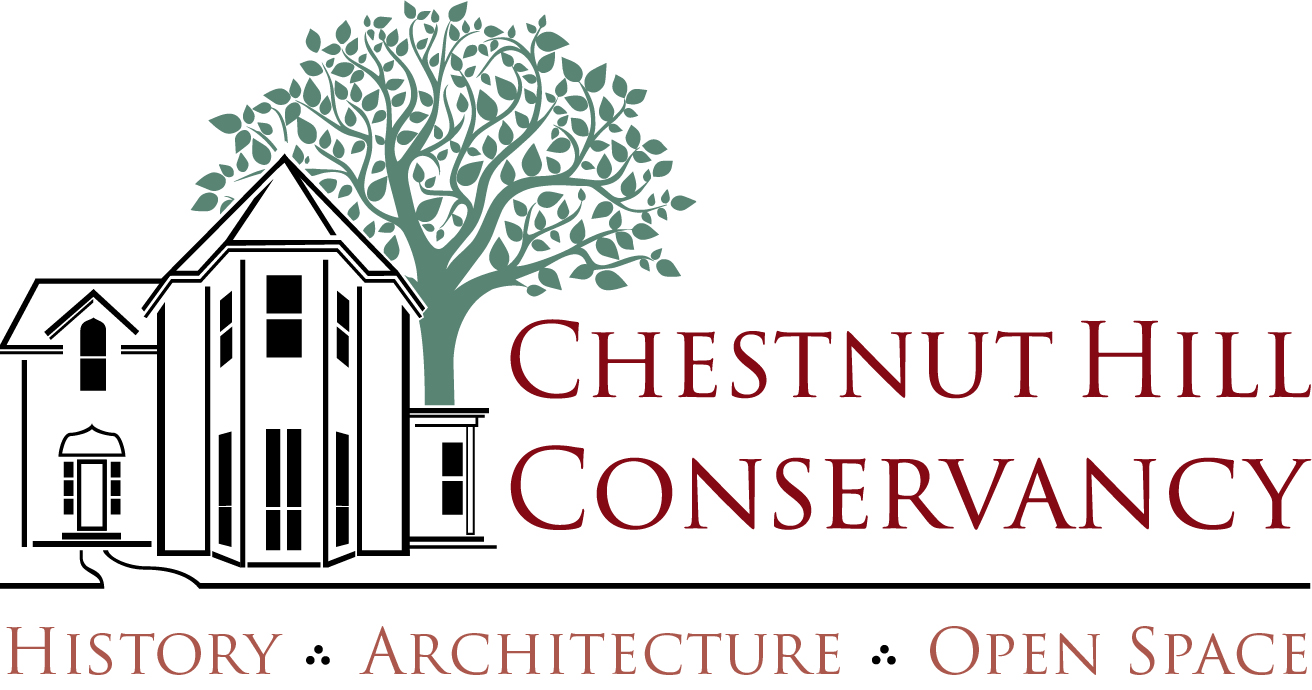Discovering Chestnut Hill
Discovering Chestnut Hill is one of the Conservancy’s signature public program series. Through guided tours and lectures, it spotlights the area’s rich architecture, history, and natural beauty. Conservancy Members benefit from discounted tickets and exclusive access to special events, fostering deeper connections with our community’s heritage.
Become a Conservancy Member today to enjoy discounts on programs like this and help preserve the stories and spaces that define our community.
“Private Gardens of Philadelphia – Lost and Found” lecture with Nicole Juday
Date: Wednesday, April 9, from 7:00 to 8:30 PM
Location: Hybrid (in-person SOLD OUT, virtual attendance available)
Registration Link: Registration is closed
Registration Fee: $15 for Conservancy Members, $25 for Non-Members
Join us for the first installment of our 2025 Discovering Chestnut Hill series, Private Gardens of Philadelphia: Lost and Found, featuring author and garden historian Nicole Juday.
This hybrid event will take place on Wednesday, April 9, 2025, offering both limited in-person seating and virtual attendance. The in-person program will run from 6:30 to 9:00 PM, while the lecture will begin at 7:00 PM for all attendees, followed by a moderated Q&A led by Conservancy Board Member and landscape architect Rob Fleming. The Q&A will begin around 8:00 PM.
The Philadelphia region is home to more historic private gardens than any other part of the United States. In this engaging talk, Nicole Juday will explore remarkable gardens featured in her recent book, Private Gardens of Philadelphia, highlighting those that have survived against the odds and what they reveal about Philadelphia’s rich social and cultural history. These gardens—hidden behind tall hedges, nestled in bustling neighborhoods, or tucked away down quiet lanes—reflect generations of stewardship, dedication, resilience, and horticultural artistry.
The event will feature breathtaking photography by Rob Cardillo, showcasing the beauty and diversity of these private landscapes, from meticulously maintained estates to gardens that have adapted to environmental and urban challenges such as development pressures, flooding, and deer.
About the Speaker:
Nicole Juday’s career has encompassed her garden design business, working as a Landscape Curator at Wyck Historic Garden and running the renowned Arboretum School at the Barnes Foundation. She then served as Director of Audience Engagement at the Pennsylvania Horticultural Society. She has published numerous articles, winning a silver medal for her writing by the Garden Writers Association. She serves as board chair for the IDEAL Industries Foundation.
Event Details:
- Date: Wednesday, April 9, 2025
- Time: 7:00 – 8:30 PM (Lecture begins around 7:00 PM, Q&A begins around 8:00 PM)
- Format: Hybrid (Limited in-person seating, virtual attendance available)
- Location: In-Person Philadelphia, PA 19118, or Virtual, via Zoom
- Q&A Moderator: Rob Fleming, Landscape Architect and Chestnut Hill Conservancy Board Member
Registration:
Advance registration is required. In-person attendance is limited and expected to fill quickly. Virtual registrants will receive a link to join the event remotely.
Space is limited for the in-person attendees; sign up today!
The Chestnut Hill Conservancy’s public programming is made possible through the generous support of our Lead Sponsor, Chubb, General Sponsors, Event Sponsors, and members. John B. Ward proudly serves as the 2025 Discovering Chestnut Hill Event Sponsor, while E.G. Rall Landscape Design is our 2025 Supporting Event Sponsor.
For more information, please get in touch with Chrissy Clawson at Chrissy@CHConservancy.Org or 215-247-9329 x 108.
2025 GENERAL SPONSORS
2025 DISCOVERING CHESTNUT HILL SPONSORS
EVENT SPONSOR
SUPPORTING SPONSOR











